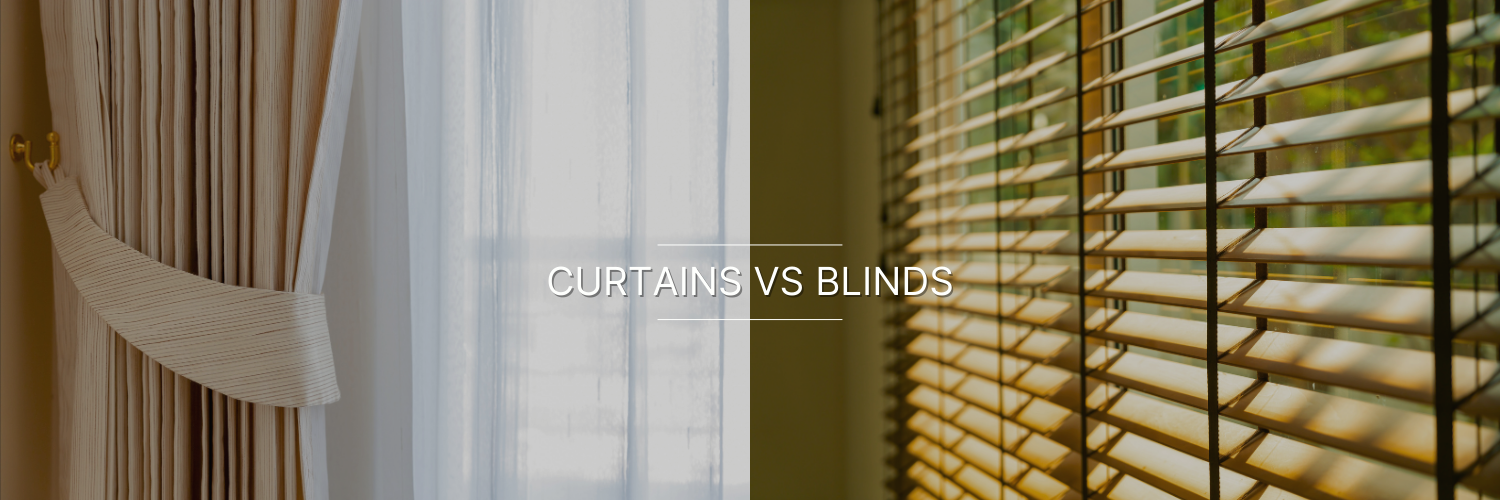Windows play a crucial role in shaping the ambiance and aesthetic of a room, and selecting the right window treatment is essential to achieving the desired look. Blinds and curtains are two popular choices, each offering unique features and benefits. In this comprehensive guide, we’ll delve into the world of blinds vs. curtains, exploring their differences, advantages, and how to choose the perfect option for your home.
Understanding Blinds
Blinds are window coverings made of slats or vanes that can be adjusted to control light, privacy, and ventilation. They come in various materials, including wood, metal, fabric, and vinyl, offering versatility to suit different decor styles. One of the primary advantages of blinds is their ability to provide precise control over natural light, allowing you to adjust the angle of the slats to filter or block sunlight. This feature makes blinds an excellent choice for rooms where light control is essential, such as bedrooms and offices.
Types of Blinds
Venetian Blinds: Horizontal slats that can be tilted for light control.
Vertical Blinds: Vertical slats ideal for large windows and sliding doors.
Roller Blinds: Single piece of fabric that rolls up or down for simplicity.
Cellular Blinds: Honeycomb design for energy efficiency and insulation.
Advantages of Blinds
Precise Light Control: Adjust the slats to achieve the perfect balance of light and privacy.
Variety of Materials: Choose from wood, metal, fabric, or vinyl for a customized look.
Space Efficiency: Blinds take up less space than curtains, making them suitable for small rooms.
Modern Aesthetics: Clean lines and contemporary designs enhance modern decor.
Understanding Curtains
Curtains, on the other hand, are fabric window coverings that hang vertically from a rod. They come in various lengths, styles, and fabrics, allowing for a wide range of design possibilities. Curtains add a soft and elegant touch to a room, making them a popular choice for living rooms, dining areas, and formal spaces. Unlike blinds, curtains are primarily used for decorative purposes, although they do offer some level of light control and privacy.
Types of Curtains
Grommet Curtains: Featuring eyelets for a contemporary look.
Tab-Top Curtains: Loops of fabric for a casual and relaxed style.
Pleated Curtains: Elegant folds that add a touch of sophistication.
Sheer Curtains: Lightweight and translucent for a delicate appearance.
Advantages of Curtains
Decorative Appeal: Curtains add texture, color, and pattern to a room, enhancing its overall decor.
Softness and Elegance: Fabric curtains create a cozy and inviting atmosphere.
Versatility: A wide range of styles and fabrics allows for diverse design options.
Sound and Thermal Insulation: Heavier curtains provide additional insulation against sound and temperature fluctuations.
Blinds vs Curtains: A Comparative Analysis
Light Control:
Blinds: Offer precise control with adjustable slats.
Curtains: Provide varying levels of light control depending on fabric thickness.
Privacy:
Blinds: Can be adjusted to allow partial or complete privacy.
Curtains: Thicker fabrics offer more privacy.
Aesthetics:
Blinds: Provide a modern and streamlined appearance.
Curtains: Add softness, elegance, and decorative appeal.
Maintenance:
Blinds: Generally easier to clean, especially for materials like vinyl.
Curtains: May require more effort, especially for heavy or delicate fabrics.
Space Consideration:
Blinds: Ideal for smaller spaces due to their compact design.
Curtains: Require more space and may overwhelm smaller rooms.
Versatility:
Blinds: Suitable for various decor styles, especially modern and minimalist.
Curtains: Offer a wide range of design options to complement different aesthetics.
Choosing the Right Window Treatment
Consider Functionality: Assess the primary purpose of the window treatment—whether it’s for light control, privacy, or decorative enhancement.
Evaluate Decor Style: Determine the overall style of the room and choose blinds or curtains that complement the existing decor.
Room Size Matters: In smaller rooms, blinds might be a more space-efficient choice, while curtains can add grandeur to larger spaces.
Balance Aesthetics: Strike a balance between aesthetics and functionality to create a harmonious and visually appealing room.
Conclusion
In the debate of blinds vs. curtains, there’s no one-size-fits-all answer. The choice ultimately depends on your preferences, the needs of the room, and the overall design aesthetic you want to achieve. Whether you opt for the modern functionality of blinds or the timeless elegance of curtains, the perfect window treatment is the one that enhances your space, creating a harmonious and inviting atmosphere.





